Doping control is the process of selecting athletes for testing, collecting urine and/or blood samples from those athletes, and testing those samples for prohibited substances. It’s one of the primary methods for detecting and deterring doping.
Doping control procedures are based on international standards from the World Anti-Doping Agency. Anywhere in the world where you are selected for testing, the processes will be basically the same.
Selection
An effective testing program needs to be unpredictable and it also needs to be intentional. That’s why we use multiple methods to select athletes for testing.
Weighted Selection
Depending on the risk of doping, some sports, positions, or athletes may be selected more frequently.
Targeted Testing
Sometimes we receive reliable intel through the CCES Integrity Hotline or other routes that indicate we should test an athlete.
Finishing Position
In competition, athletes can be selected based on their finishing position.
Random Selection
Athletes are selected from a list using a random number generator.
Doping Control
What can you expect if you're selected for doping control?
You may be selected for doping control at competitions, training camps, at home, or at any other location throughout the year, with no advance notice.
In competition
An authorized chaperone or doping control officer (DCO) will approach you after an event, such as a race or game.
Out of competition
An authorized chaperone or DCO will approach you at your training venue, residence, or other location.
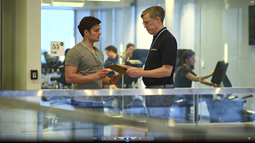
Notification Process
A chaperone or DCO will notify you that you’ve been selected for doping control and will tell you that a urine and/or blood sample will be collected. You will also be informed of your rights and responsibilities. You will read and sign the athlete selection order (a document explaining that you have been selected and which tests will be done) then report to the doping control station. More about your rights and responsibilities.
What happens if an athlete refuses to participate?
One of your responsibilities is to comply with the sample collection procedures. If you’re selected, you have to provide a sample. Refusing to do so is a violation of the anti-doping rules, and so is failing to comply. There are no exceptions! If you need assistance or accommodations, discuss your needs with the DCO.
Delays
Once notified, you must report to the doping control station immediately. If needed, you can request a delay for a valid reason, which might include:
- Competing in further events,
- Participating in a victory ceremony,
- Fulfilling media commitments,
- Warming down,
- Obtaining necessary medical treatments,
- Locating a representative and/or interpreter,
- Obtaining photo identification, or
- Completing a training session.
Remember that you have the right to request a delay, but not the right to be granted one. DCOs and chaperones will do their best to accommodate you, but depending on circumstances they may not allow it. If the DCO grants you a delay or allows you to leave the doping control station you will be accompanied by a chaperone.
The Representative
You can ask for someone to accompany you through the doping control process to help protect your rights and fulfill your responsibilities. The ideal time to get a representative s following the notification process.
The representative can be a parent, a coach, or another trusted adult who is 18 or older. If you need to locate a representative, your chaperone will go with you. The representative can ask questions, observe the process, and document comments about the session to give the CCES feedback.
Minors need an adult to accompany them as a representative. If you are a minor, have a discussion with your parents or coach about who will act as your representative if you’re selected for doping control.
Once at the doping control station, the DCO will explain the sample collection process. You will have the opportunity to ask questions, so ask as many as you need to make yourself feel comfortable!
Modifications
If you need assistance at any point during sample collection, discuss your needs with the DCO. They’re trained to accommodate all sorts of needs. Whether it’s due to an injury, an impairment, or something else, they can modify the process if needed.
Urine Sample
When you’re ready to provide a sample, you will select one individually sealed collection vessel from at least three options. You will inspect the equipment and verify the sample code numbers. You will be in control of the collection vessel from this point until you seal the sample.
In the washroom, you will wash your hands with water.
In the presence of a witness, you will provide a urine sample of at least 90 ml. To ensure the witness has a clear view of the sample leaving your body, you will disrobe from mid-torso to mid-thigh.
The witness will be the DCO or a chaperone of the same gender. If the athlete is transgender, the witness's gender will match the athlete's sport category (e.g., for a trans athlete participating in men's sport, the witness will be a man).
If you don’t provide 90 ml on the first try, the DCO will guide you through the process of temporarily sealing your partial sample. When you’re ready to go again, you will repeat the process and continue until you produce a total of at least 90 ml.
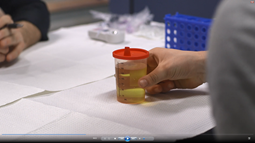
Blood Sample
You will remain seated and relaxed for at least 10 minutes before a certified blood collection officer (BCO) draws blood.
You will select the blood collection equipment that the BCO will use for the session. You will inspect the equipment and verify the sample code numbers.
The BCO will apply a tourniquet to your non-dominant arm and clean the skin at the puncture site. They will draw blood and fill each tube with the required volume of blood.
Not everyone is comfortable with needles, so don’t suffer in silence. Share your level of comfort with needles with the BCO and they will adapt the process to the best of their abilities.
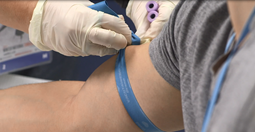
When the blood draw is complete, the BCO will place the collection tubes in the A and B containers , which you will seal by tightening the lids as directed.
Before it’s sent to the lab, the sample has to be sealed in tamper-proof bottles. That way, we’ll know that nothing has happened to it between the doping control station and the lab, ensuring the integrity of the sample. Your representative can help you during this phase of sample collection.
Select a Pre-Packaged Kit
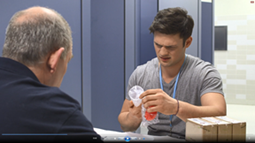
You will inspect a selection of sealed kits and select one. The equipment in the kit will be used to contain, identify, and secure the sample. If either you or the DCO are not satisfied with the kit you chose, you can select a different one.
Record the Sample Code Number
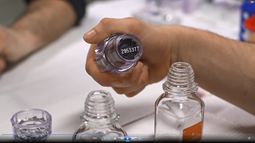
You will unpack the kit and verify that the sample code numbers on the bottles, their lids, and the cardboard box are all the same. The DCO will also verify that they match, then record the sample code number on the doping control form.
Seal the Sample
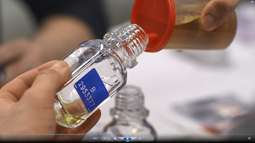
The DCO will instruct you to pour your urine sample from the sample collection vessel into two bottles that are marked A and B. Then, you will seal the bottles by tightening the lids and you will invert the bottles to ensure there is no leakage when directed by the DCO.
Check the Specific Gravity
For urine samples, the DCO will use a device to measure the sample’s specific gravity, which is a measure of its density. If the first sample doesn’t meet the minimum specific gravity requirements for testing, you will have to provide another one.
Declaration
Before you review the paperwork with the DCO, it’s important to think about what might be detected in your sample. You will list, or declare, all prescription and non-prescription medications, and supplements you have used in the past seven days. If you are providing a blood sample, you will be asked to declare any blood transfusions you’ve had in the last three months. The DCO will record this information on the doping control form and the lab will use it in its analysis.
Complete the Paperwork
You and your representative, if applicable, will review the doping control form to ensure it’s complete and accurate. You will be asked if you would like to provide a comment about the doping control session — if you are satisfied with how the session went, you can say so, and if not, you can record your concerns on the form. Finally, you will sign the form.
You will receive an electronic copy of the doping control form at the email address entered on the paperwork. If your session was completed on paper forms, you’ll receive carbon copies. Keep these records for at least six weeks. You will need it in case of an adverse analytical finding — a positive test.
Your sample will be packed and sealed, then shipped securely to the lab for analysis. Samples collected in Canada are sent to the INRS Armand-Frappier Santé Biotechnologie Research Centre in Montreal, which is accredited by the World Anti-Doping Agency. The lab will verify that the sample is secure, and that the sample they received is the same one that’s listed on the doping control form. Your A sample will be tested, and your B sample will be stored securely for future testing or research.
Test Results
If you are in the CCES Registered Testing Pool, you can log into ADAMS to see your test results, which are available a few weeks after the doping control process is completed. If there is an adverse analytical finding – a positive test – then you will be notified within four to six weeks. Otherwise, no news is good news!
FAQ
There are no exemptions to sample collection, religious or otherwise. When possible, we can modify procedures and make accommodations, but if you’re selected, you need to provide a sample.
If you are fasting as part of a religious practice (e.g., Ramadan), you may need more time to produce a sample due to dehydration. In a case like this, the DCO will accompany you until you are ready to provide a sample. Refusing to provide a sample is a violation of the anti-doping rules.
It’s certainly one of the stranger parts of being an elite athlete. By watching the sample come from your body, the DCO or witness knows that it’s definitely your sample. This process is in place because athletes have tried to fool the doping control process by providing a fake sample – either their own clean urine or someone else’s.
Tips for Doping Control
Canadian Olympians give their best tips on preparing for and going through the doping control process.
What are doping control personnel like?
Worried about doping control? Here’s what Canadian Olympians think you can expect from your DCO.